The All India Trade Union Congress (AITUC) was the first trade union organization in India. It was established in 1920. Lala Lajpat Rai was the first president.
Till 1945, all workers in India irrespective of their political belief were members of the AITUC. Later the trade union movement split politically. Unions in organized and unorganized sectors like textile, engineering, coal, steel, road transport, electricity board, beedi, construction, head load workers, anganwadi, local bodies.
Com.Ramendra Kumar is the National President of AITUC and Com.Amarjeet Kaur is the General Secretary.
AITUC – THE PAST
All India Trade Union Congress (AITUC), the first Central Trade Union of India, completes 100 years of its glorious history on 31st October, 2020. AITUC was founded in an all India conference held in the city of Mumbai with unions of various sectors from all over India on 31st October, 1920. This national organization of Indian working class was born in the midst of the anti-colonial freedom struggle of the country taking a massive shape of resistance, when in the Jalianwala Bagh, the British Army General ordered indiscriminate firing on the people gathered on Baisakhi festival day, killing hundreds of people (13.04.1919). In the anguish that followed, the rural and urban working people along with the students, teachers and other sections of the society massively participated in the non-co-operation and civil-disobedience movement called by Mahatma Gandhi.
It will be useful to briefly narrate the background, the circumstances which led to the formation of this historic organization of workers.
The beginning of the labour upsurge against the oppression and exploitation goes back to the second half of nineteenth century, with emergence of class of casual general labour during the British Raj in India. The self sufficient village economy was shattered with no new structures in place, creating impoverished peasantry and landless labour force. The dumping of cheap industrial goods resulted in millions of artisans, spinners, weavers, craftsmen, smelters, smiths, and potters etc. losing their livelihood, who could no more live on agriculture, thus turned into landless labourers. This led to widespread famines in India through the period 1850 to 1890 resulting in deaths of several lakhs and millions reduced to penuary. The anguish of impoverished masses, ruined peasantry was up in revolt which resulted in several movements even though crushed by the rulers. This background did help the 1857 revolt by princely states against the disempowering policies of British rule.
This impoverishment of peasantry and the handicrafts men pushed them towards cities to supply cheap labour for the industries. What was unknown in the past, this general casual labour was created under most exploitative conditions.
India was being converted into supplier of raw materials and buyer for foreign manufactured goods and hence the construction of railways, development of plantation industry, tea, coffee, jute etc. was brought about. The landless labourers were employed; long term contracts imposed, any breach resulting in arrests, and became the common scenario. It was this second half of 19th century when the era of capitalism was ushered in India by the British rule. Assam Tea Company was established in 1839, the first railway line laid in Thane on April 16, 1853 and Raniganj Railway line in 1854.
The first jute mill was set up in 1854 in Calcutta with British capital whereas in Tardeo, Bombay first textile mill was set up in 1854 with Indian capital. The development of Railway helped British in Coal mining and later in iron and steel industry in Bihar. Semi-serf conditions were prevalent with no regulation. Men, women, children were laboring 16 to 17 hours a day; wages were very low, inhuman working conditions prevailed. Therefore, in this background, labour unrest was inevitable. There is evidence of strikes taking place in 1827, palanquin bearers organized a month long strike in Calcutta, in May 1862, 1200 Howrah Railway workers went on strike demanding 8 hours working day. In 1862 June, railway clerks of Eastern Indian Railway went on strike. Between1862 to 1873, there were several strikes including those of Bullock Cart and Hackney drivers of Calcutta, Laundry workers of Bombay, milk sellers of Madras and the compositors of printing press in Bombay. It is to be noted that the organizations of workers were not formed, but the workers were going in action.
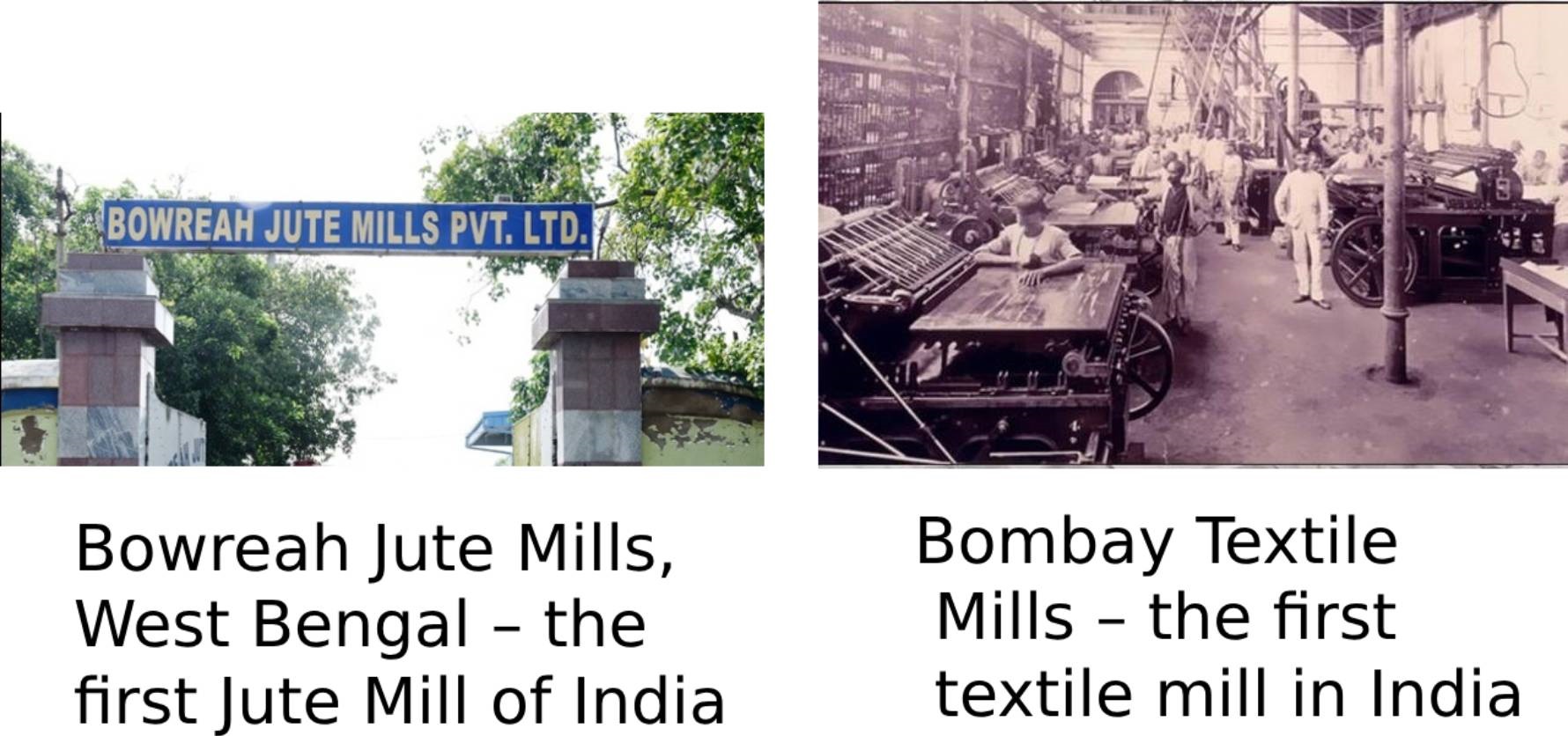
In 1866, 60 trade unions came together in America, and adopted a programme of movement to be launched for eight hours working day. In several countries there were strikes between 1820 and 1840 for shorter working hours. In Chicago in 1886 the workers agitation for fixed working hours had been soaked in blood. Yet in 1890, 1st May was observed as Demand day for eight hours working day in several parts of the Globe. These actions were also impacting the Indian labour movement. In 1877, there was a strike in Empress Mills in Nagpur demanding wage increase; this was joined later on by the workers of Railways, Cotton Mills of Bombay and Ahmedabad, then by jute mills etc. The revolts took place in plantations and work was struck in coal mines. There were about 25 strikes in a span of eight years from 1882 to 1890.

In the period 1891 to 1901, spontaneous working class protest actions including strikes was the scenario reflecting emergence of the solidarity actions as well as some level of class consciousness of Industrial workers. This trend grew steadily in the years preceding the First World War.
From 1905 onwards, there was a notable advance in the working class actions and it was more and more closing its ranks with the advance of freedom struggle in the country.
A strike took place in Bombay against extension of working hours. The workers in Calcutta of printing press also struck work.
Another great event of the period was the strike by industrial workers of Bombay from July 24th to 28th 1908, in protest against the pronouncement of the judgment, sentencing the popular freedom fighter Lokmanya Bal Gangadhar Tilak to six years imprisonment. There were street fights between workers and police and military of British rulers. Lenin wrote about this strike, “The Indian proletariat has already matured sufficiently to wage a class conscious and political mass struggle, and that being the case, Anglo-Russian methods in India are played out”.
The working class was on its onwards march to get organised in many more sectors from 1914 onwards.
The October Revolution in 1917 in Russia during First World War was a great impetus for Indian labour movement as the working class along with peasantry captured power for the first time in the history of mankind.
In 1917 weavers also formed unions in Ahmadabad. In 1918 seamen organised as union and on April 27, 1918 Madras Labour Union was formed. Several other unions were formed in 1918 such as Bombay Presidency Postmen‟s Union, the Clerks Union (Bombay), Port Trust Employees Association Calcutta, Asiatic Saloon Crew Union (Bombay) etc. In 1919, we find Press Employees Association Calcutta, Calcutta Tramway Employees Association, the Employees Association-Calcutta, Mechanical Workers Union, Punjab Press Association etc being formed.
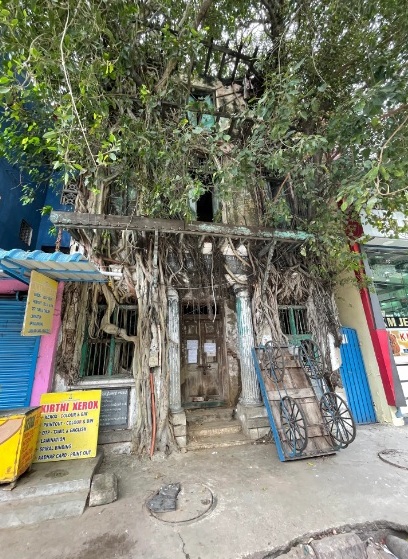
Dilapidated building of Madras Labour Union.
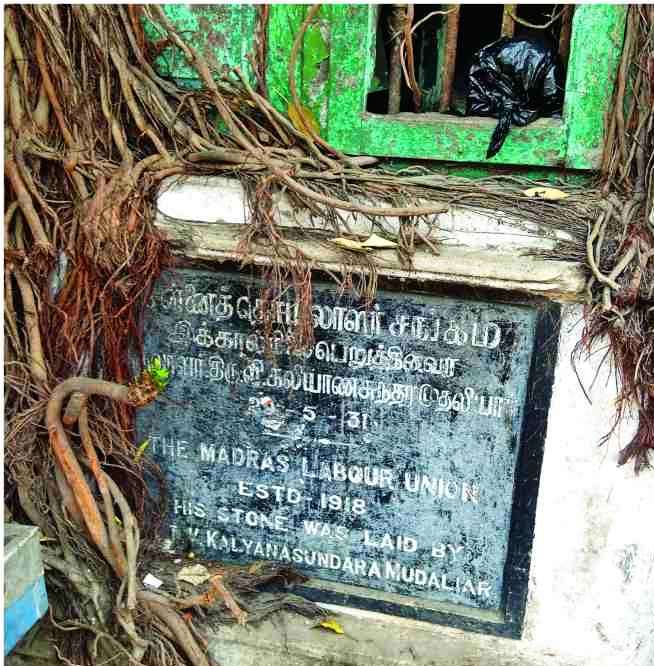
Foundation stone of the building of Madras Labour Union. The year of establishment of the Union can be seen engraved as 1918
In 1918 great strike in cotton mills of Bombay started and soon it spread to other areas with 1,25,000 workers participating by January 1919. The strike against Rowlatt Act of March, 1919 (Similar to UAPA at present) had great impact on the national struggle itself. In the first half of 1920, there were 200 strikes involving 15 lakh workers. The demands were for 10 hrs working and dearness allowance. Out of 97 strikes during July to December 1920, only 31 ended in failure. In all other cases there were successes to some extent.
Similarly in 1920, another set of unions came into being such as Jamshedpur Labour Association, Ahmadabad Workers Union. Indian Colliery Employees Association, Bengal Nagpur Railway Indian Labour Union, All India Postal RMS Union, Imperial Bank Staff Association, Burma Labour Association, Howrah Labour Union, Oriya Labour Union, Bengal & North Western Railway Men‟s Association, BBC & I Railway Employees Union, Eastern Bengal Railway Indian Employees Association, Bombay Port Trust Employees Union, Bengal Miners Union.
We should also know that when unionization started growing from 1900 onwards, the Indian Penal Code was amended in 1913 to crush trade unions and that had made the workers more assertive and militant. That is how one explains how, from 1914 onwards, an unrelenting march of forming the unions by workers began.
It was in this heroic background that the preparations began in July 16, 1920, when a convention was held in Bombay which decided “to hold All India Trade Union Congress in Bombay”. A reception committee with 500 members, with Joseph Baptista as chairperson, was formed. Hence the first session, the founding conference began on 31st October 1920, in Empire Theatre Bombay with Lala Lajpat Rai as the founding President.

Empire Theatre, Bombay
101 delegates from 64 unions with a membership of 1,40,854 from all over India participated with the presence of political leaders of various shades of opinions such as Motilal Nehru, Mohamed Ali Jinnah, Mrs. Annie Besant, V. J.Patel, B.P. Wadia, J. Bapista, Lalubhai Samaldas, Jamnadas, Dwarkadas, B. W. Wadia, R.R. Karandikar. Col. J.C. Wedgwoodof British Trade Union Congress attended as fraternal delegate. 43 other unions which could not join the conference expressed sympathy and full support. Lala Lajpat Rai led a procession of 10,000 workers in the city of Bombay. Lala Lajpat Rai had declared “for the present, our greatest need is to organise, agitate and educate. We must organise our workers, make them class conscious & educate them in the ways and interest of the commonweal”. He also observed that labour “today had become an international factor and everyone‟s life all over the world had become interlinked. There would be no salvation until and unless the workers of Asia were organised and internationally affiliated”. In this first conference, Lala Lajpat Rai as elected president and V. M. Pawar as the general secretary. Later on Pd. Jawaharlal Nehru, Netaji Subhash Chandra Bose, V. V. Giri, Sarojini Naidu, C. R. Das and several of other political leaders of the freedom struggle were associated with subsequent conferences and work of AITUC, giving impetus to its work.
AITUC in its second session in 1921 in Jharia had adopted a resolution of Swaraj (Complete independence from British rule), almost eight years before the platform of freedom struggle- the Indian National Congress adopted such a resolution in 1929.
AITUC leadership, with the working class in a fighting mood, took the organisation to new heights. Several of the laws were improved upon due to trade union agitations, the Workers Compensation Act was achieved in 1923 and Trade Union Act 1926 was achieved with lots of continuous struggles in the period 1920 to 1925. The leadership still continued with the middle classes, intellectuals, many of them with philanthropic approach. But simultaneously those with the ideas of Marxism and Socialism were taking keen interest in unionization. S.A. Dange started an English journal “Socialist” in 1922.
In 1927, for the first time AITUC officially called for observing May Day by its affiliates. From 1928 to 1931 was a great upsurge in working class activities politically. The leaders with socialist ideas in the freedom movement were gaining grounds.
In almost all the sessions (Conferences) of AITUC, international delegates attended or sent messages of solidarity. Red International Labour Union and International Federation of Trade Unions always sent their message and sometimes delegates to various sessions (Conferences) of AITUC. AITUC was represented in the ILO sessions from 1920 onwards. AITUC delegates to ILO were also playing a significant role in bringing the plight and concerns of working class in Asian region to the notice of the world body. The relationship of AITUC with unions of various countries was developing consistently.
After 1925, the consolidation of the movement took place with Trade Union Act 1926 coming into being and then the opposition to the visit of Simon Commission to India (1928, to study and make recommendations on constitutional reforms) by political forces as well as the trade unions. The strike actions were becoming more regular.
From 1931 to 1938, the period of great recession brought repressions and economic miseries to the working people. This brought closing of ranks by the trade unions to face onslaughts of the rulers and employers.
The period between 1939 and 1945, when the Second World War took place was the most difficult and testing times for the working class. Being part of the freedom movement, its own agenda of workers and then in solidarity with the workers of those countries who were being crushed by the Nazi army. The AITUC played a significant role in the foundation of WFTU. The preparatory international conference was held in London in February 1945 with 204 delegates and observers representing 670 million workers from all parts of the world. AITUC was represented by S.A. Dange, R.A. Khedgikar and Sudhindra Pramanik. This conference adopted workers charter. Finally the WFTU was founded on 3rd October 1945 in Paris.
The nation moved towards freedom in 1947. The working class rejoiced political freedom from the imperialist rule. The contribution of AITUC led movement for workers‟ rights and also in mobilising in almost all the national calls of the freedom struggle is unparalleled. This was well recognized when the Constituent Assembly included the concerns of working class, their charter of demands and resolutions adopted in various sessions while finalizing the constitution of free India. The democratic rights to unions/associations, freedom of expression, living wage, equal treatment, equal pay for equal work, maternity benefits, so on & so forth were part of the constitution adopted for free India.
AITUC IN KERALA
Modern mechanized industries did not appear in Kerala till the early decade of the Twentieth Century. The First Coir Factory in Kerala was established by the Europeans in Alleppey in the year 1859.
The „Travancore Labour Association‟, the first Labour Organization in Kerala was formed there in April 1922. P. K. Bava (Popularly known as Vadapuram Bava) was the founder of the „Travancore Labour Association‟. He was an employee of the Empire Coir works. He also evinced interest in the social reform activities of Sree Narayana Guru and T.K. Madhavan.
The “Travancore Labour Association” was named as the “Labour Union‟ in its first meeting held at Alleppey in April 1922. The Meeting elected Dr. M.K.Antony as the President and P.K.Bava as the Secretary.

The first Labour Strike took place in Kerala in the year 1907 in protest against the twelve hour work norm prevalent in the Darragh & Smail Company. The working hours got reduced by one and a half hours.
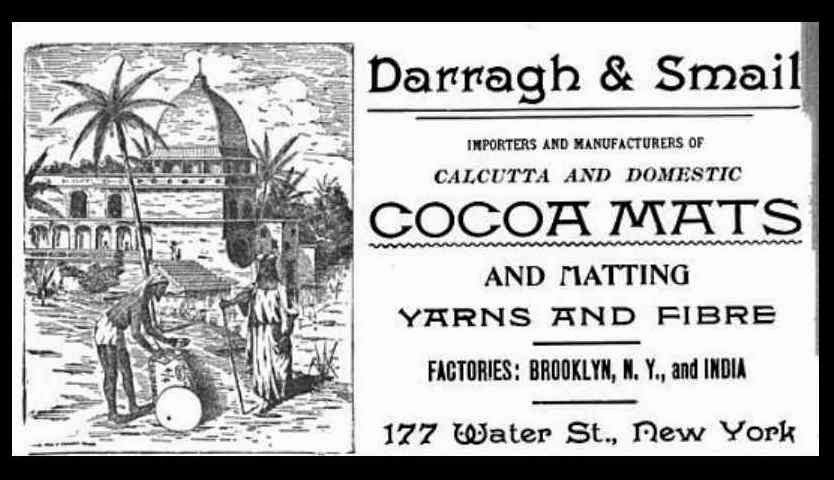
An advertisement of Darragh& Smail Co
During the time the First World War there was wide spread cut in wages and retrenchment in factories.
It was in the aftermath of the 1928 Railway Strike that Trade Union consciousness started in the Malabar (North Kerala) region.
In the Plantation Sector Trade Unions emerged only later. In 1930 an organization for Plantation Labourers came in to being at Mundakayam.
During the period 1930-1931 a labour strike took place in the Kozhikode Commonwealth Cotton Mill. Tile factories and power loom textile sector also witnessed labour strikes. These strikes were not held under the banner of any trade union.
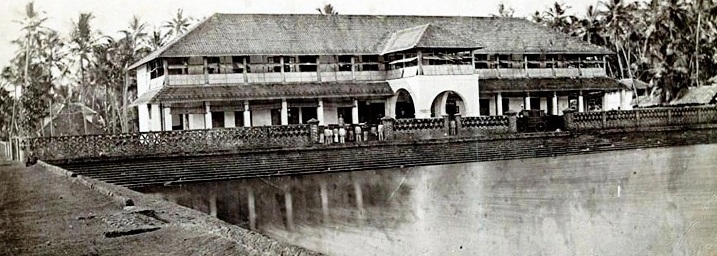
Commonwealth cotton mill, Kozhikode- an old picture
The “Thiruvithamkur Boat Crew Association‟ was formed in Alleppey in the year 1930.
The great depression of the 1930‟s witnessed several labour agitations in Kerala. It was during this period that the Labour Unions turned to agitations like strikes in place of the earlier form of petitioning. The Unions formed in different sectors came under the influence of the Congress Socialist Party (CSP). Trade Union activities spread to every nook and corner of Malabar
In May 1935 the first All Kerala Workers Conference was held in Kozhikode. The conference demanded complete independence for India.
The Second All Kerala Workers Conference held at Trissur on 25th April 1937 asked the Trade Unions in Kerala to get affiliated with the AITUC.
The Trade Union movement got further strengthened in Travancore and Cochin with the passage of the new Trade Union laws providing for registration of Trade Unions. In 1938 the “Thiruvithamkur Coir Factory Workers Union‟ registered and it was the First Trade Union in Travancore.
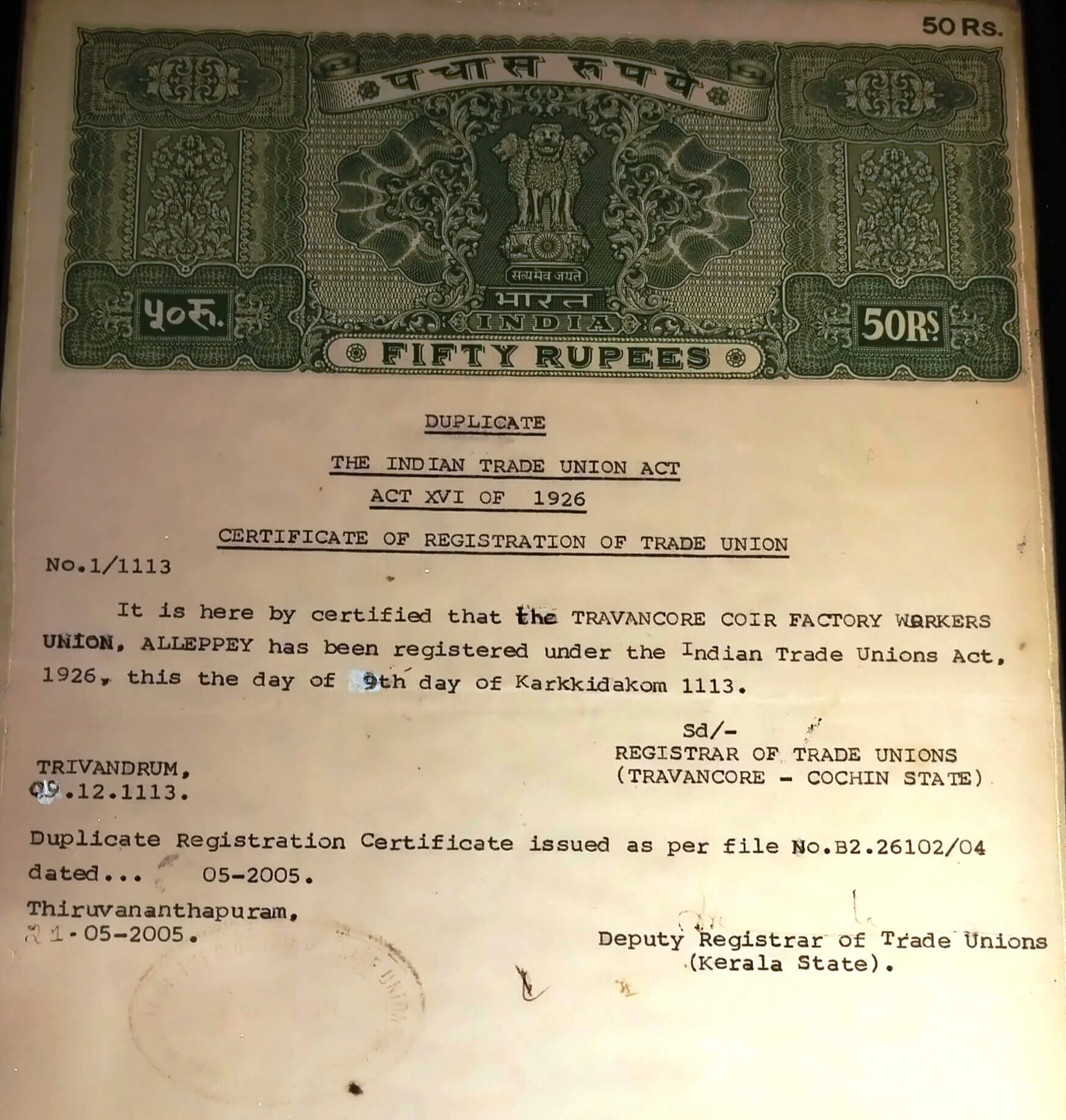
Copy of Registration Certificate of first Trade Union
In 1939 the All Malabar Motor Workers Conference was held. This marked the beginning of workers in one sector organizing their own unions.
Travancore State Congress began the struggle for Responsible Government in the Princely State of Travancore on October, 1938.
On September 1, 1939, World War II broke out. Exploitation and measures such as price gouging and wage cuts have increased. Labor strikes were widespread. In December 1939, the Congress Socialist Party merged with the Communist Party. With that, the labor movement in Kerala was also taken over by communist sympathizers.
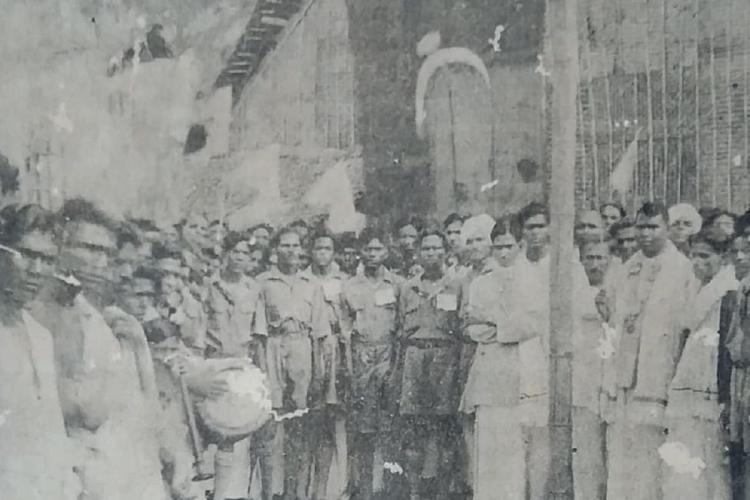
Red flag imprinted hammer and sickle was hoisted for the first time in 1936, when Travancore Labour Union convention was held. It was senior labour leader V.K.Velayudhan who hoisted the flag
Instead of trying to find a solution to the miseries caused by the war, the authorities tried to suppress the workers who raised their voices against exploitation and anti-labour measures. Workers against British imperialism and feudalism organized the famous Punnapra-Vayalar strike to end the tyrannical rule of the Travancore Diwan. That struggle marked the emergence of a politically conscious proletariat in Kerala and marked as the highest chapter of the proletariat's revolutionary struggle for independence.

When Punnapra-Vayalar detainees released from jail
The governments that came to power after independence also followed the anti-labour policy of the British and the rulers of the erstwhile Travancore. When the rights won through the struggles were denied one by one, the workers began to agitate again. The authorities even created a situation where trade unions could not function legally.
However, with the declaration of India as a Republic on 26 January 1950, the AITUC was able to win legal battles for civil liberties and organize trade unions in new areas. In the general elections held in 1951-52, many labor leaders were elected to the Legislative Assembly and Lok Sabha due to the influence of trade unions.
With the formation of the State of Kerala in 1956, many new trade unions were formed. In the first elections held in the state of Kerala, the workers once again proved their organizational strength. The Communist Party, oriented towards the proletariat movement, won a majority and a government dominated by labour leaders came into being.
The 18th State Conference held from 2nd to 5th January at Ernakulam elected Com.T.J. Anjalose t and Com.K.P.Rajendran as the President and General Secretary respectively.
